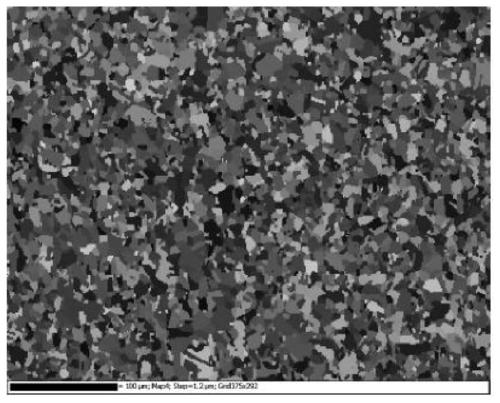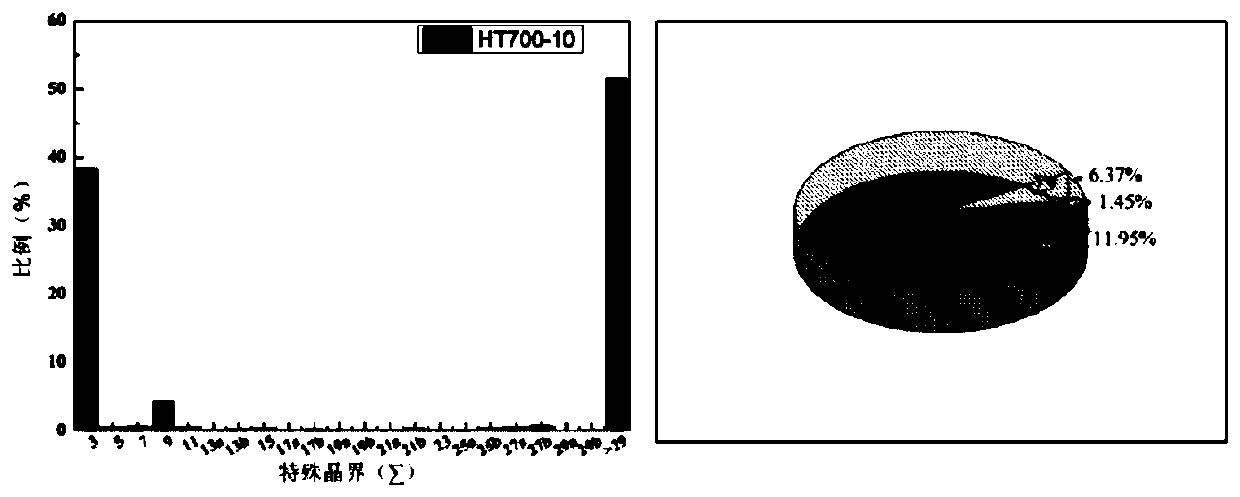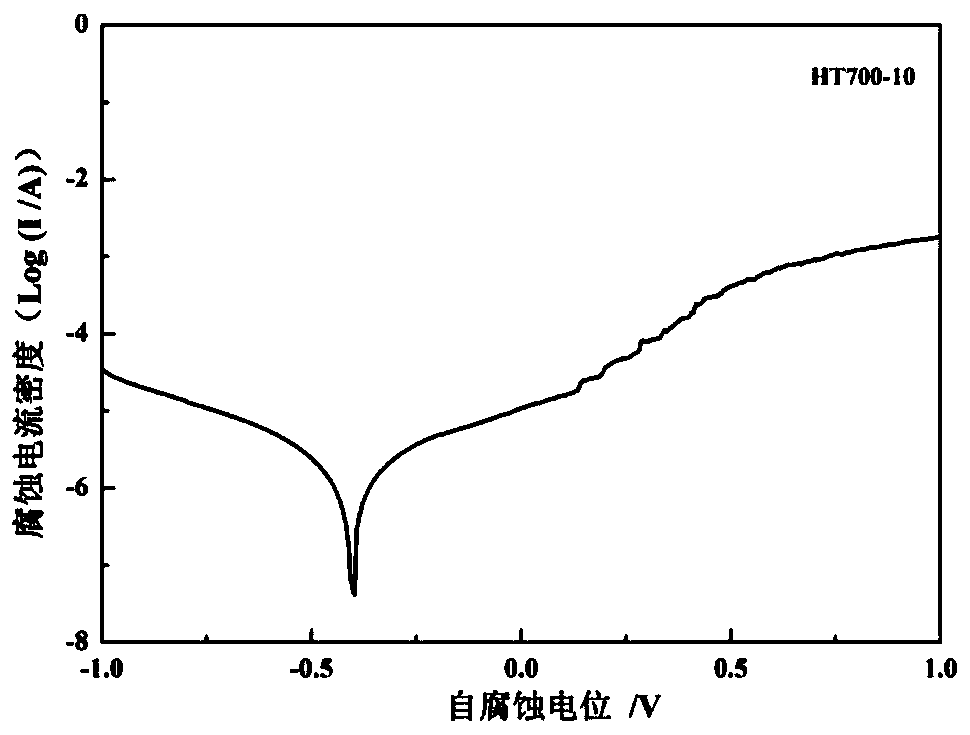Method for regulating and controlling corrosion resistance of CoNiFe medium-entropy alloy
An entropy alloy and corrosion-resistant technology, which is applied in the field of regulating and controlling the corrosion resistance of CoNiFe meso-entropy alloys, can solve the problems of performance discount and corrosion performance decline, and achieve the effect of improving corrosion resistance, reliable method and high degree of controllability
- Summary
- Abstract
- Description
- Claims
- Application Information
AI Technical Summary
Problems solved by technology
Method used
Image
Examples
Embodiment 1
[0033]The method includes five steps of vacuum melting, homogeneous treatment, hot forging, controlled rolling, and controlled annealing; the proportion of low ΣCSL (3≤Σ≤29) grain boundaries of the prepared CoNiFe mid-entropy alloy is 48%, and Σ3 The proportion of grain boundaries was 79%.
[0034] The medium entropy alloy prepared by this method has strong corrosion resistance
[0035] The specific method steps are as follows:
[0036] (1) Vacuum smelting: put 33.3% cobalt, 33.3% iron, and 33.4% nickel (purity greater than 99.99%) granular / block raw materials into a vacuum smelting furnace, and vacuumize to 5×10 -3 Pa, smelting current: 300A, then filled with argon until the furnace pressure: 0.5Pa, turned over and repeated smelting 3 times, then introduced magnetic stirring and smelting 2 times, and finally cooled with the furnace to form an ingot;
[0037] (2) Homogenization treatment: the ingot is placed in a muffle furnace, vacuumed, filled with argon, and kept at 100°C...
Embodiment 2
[0042] The method includes five steps of vacuum melting, homogeneous treatment, hot forging, controlled rolling, and controlled annealing; the proportion of low ΣCSL (3≤Σ≤29) grain boundaries of the prepared CoNiFe mid-entropy alloy is 51%, and Σ3 The proportion of grain boundaries was 83%. The medium entropy alloy prepared by this method has strong corrosion resistance.
[0043] The specific method steps are as follows:
[0044] (1) Vacuum smelting: put 33.3% cobalt, 33.3% iron, and 33.4% nickel (purity greater than 99.99%) granular / block raw materials into a vacuum smelting furnace, and vacuumize to 5×10 -3 Pa, smelting current: 300A, then filled with argon until the furnace pressure: 0.5Pa, turned over and repeated smelting 3 times, then introduced magnetic stirring and smelting 2 times, and finally cooled with the furnace to form an ingot;
[0045] (2) Homogenization treatment: the ingot is placed in a muffle furnace, vacuumed, filled with argon, and kept at 100°C for 12...
Embodiment 3
[0050] The method includes five steps of vacuum smelting, homogeneous treatment, hot forging, controlled rolling, and controlled annealing; the proportion of low ΣCSL (3≤Σ≤29) grain boundaries of the prepared CoNiFe mid-entropy alloy is 60%, and Σ3 The proportion of grain boundaries was 90%. The medium entropy alloy prepared by this method has strong corrosion resistance.
[0051] The specific method steps are as follows:
[0052] (1) Vacuum smelting: put 33.3% cobalt, 33.3% iron, and 33.4% nickel (purity greater than 99.99%) granular / block raw materials into a vacuum smelting furnace, and vacuumize to 5×10 -3 Pa, smelting current: 300A, then filled with argon until the furnace pressure: 0.5Pa, turned over and repeated smelting 3 times, then introduced magnetic stirring and smelting 2 times, and finally cooled with the furnace to form an ingot;
[0053] (2) Homogenization treatment: the ingot is placed in a muffle furnace, vacuumed, filled with argon, and kept at 100°C for 1...
PUM
 Login to View More
Login to View More Abstract
Description
Claims
Application Information
 Login to View More
Login to View More - R&D
- Intellectual Property
- Life Sciences
- Materials
- Tech Scout
- Unparalleled Data Quality
- Higher Quality Content
- 60% Fewer Hallucinations
Browse by: Latest US Patents, China's latest patents, Technical Efficacy Thesaurus, Application Domain, Technology Topic, Popular Technical Reports.
© 2025 PatSnap. All rights reserved.Legal|Privacy policy|Modern Slavery Act Transparency Statement|Sitemap|About US| Contact US: help@patsnap.com



